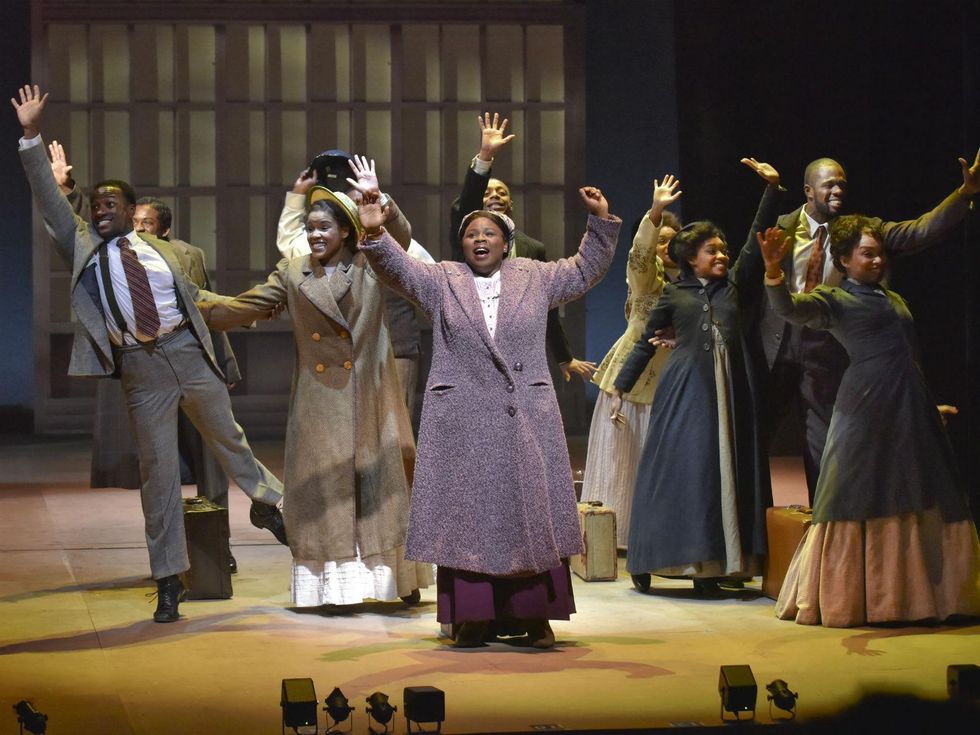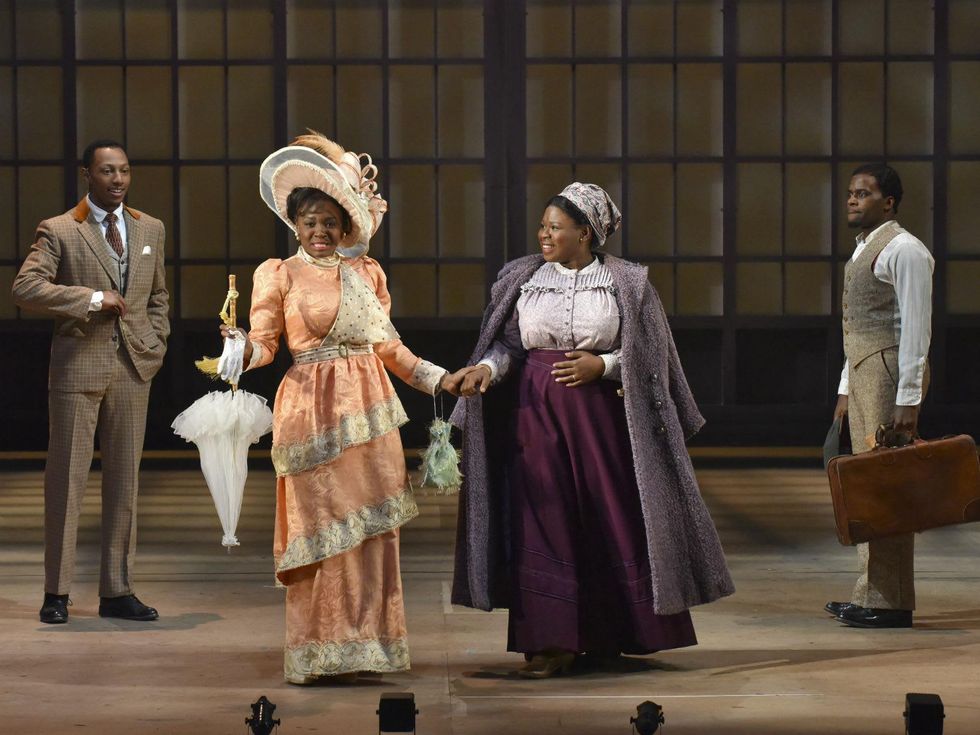Theater Review
DTC world premiere musical Stagger Lee challenges the idea of the American Dream
In the last couple of years, two stellar films, 12 Years a Slave and Selma, have powerfully captured the struggles of African-Americans at various points in U.S. history. Now, Dallas Theater Center — which has never shied away from racially themed material — has delivered its own stunning commentary on the journey of African-Americans with the world premiere musical Stagger Lee (playing at Wyly Theatre through February 15).
Written by Will Power as commissioned by the DTC, it’s an allegorical story that follows four people — Billy (Cedric Neal), Delilah (Tiffany Mann), Johnny (Brandon Gill) and Frankie (Saycon Sengbloh) — as they try to make better lives for themselves, only to find themselves haunted by the powerful Stagger Lee (J. Bernard Calloway) wherever they go.
It’s a testament to the music and direction that the production flows as easily and comprehensibly as it does. In fact, the songs do most of the heavy lifting.
But theirs is not a normal trip, as the play uses magic realism to take them to Mississippi in 1895, St. Louis in 1910, Harlem in 1930, Chicago in 1951, Oakland in 1973, Detroit in 1987 and a modern-day suburb. Each stop is accompanied by period-appropriate music like jazz, big band, doo-wop, soul, R&B and hip-hop, and the story is told mostly through song.
It’s a testament to the music by Power and Justin Ellington and the direction of Patricia McGregor that the production flows as easily and comprehensibly as it does. Each song sets the mood of the place and time efficiently, allowing the audience to experience the story with minimal disruption.
In fact, the songs do most of the heavy lifting, as the unusually normal stage setup — for the Wyly at least — and rudimentary sets don’t draw much interest. Instead, it’s the musicality of the cast, along with the live-wire choreography by Camille A. Brown, that pushes things forward.
Although a story about the pursuit of the American Dream often results in the protagonists’ achieving at least some semblance of their goals, Power doesn’t seem to have as optimistic a view. The main quartet faces multiple difficulties, including the deep roots of racism and the falsity of their own expectations. Stagger Lee himself is representative of how hard it is to escape one’s past, no matter how hard one tries.
If there’s one complaint about Stagger Lee, it’s that the two acts aren’t equally impactful. Thanks in part to the timelessness of the music in the first act, which takes us through 1951, the first four segments are both thought-provoking and a blast to watch.
The second act, which is significantly shorter, just doesn’t resonate like the first does, partly because its music doesn’t seem as powerful as the story itself. Modern music isn’t yet as enduring as that of past eras, and hanging the end of the musical on it can’t help but feel like a letdown.
Even if the energy starts to flag at the end, the acting keeps your attention throughout. Neal and Mann each do a fine job of displaying the hope and desperation needed for their roles, and Gill and Sengbloh are solid in support.
But Calloway is the most memorable, and his sheer presence and nuanced performance make him worthy of the title character.
Credit should also go to the talented ensemble, including standouts like Major Attaway and Hassan El-Amin. Called upon to portray multiple roles, including white characters, the group never fails to impress. Ricky Tripp, playing ex-slave Long Lost John, dances his way into the audience’s heart via routines introducing each new segment.
As Stagger Lee makes clear, the ability for all African-Americans to achieve the American Dream is still very much a work in progress. But as long as there are artists like Power shining a light on that inequity, we can hope for continued improvement.



